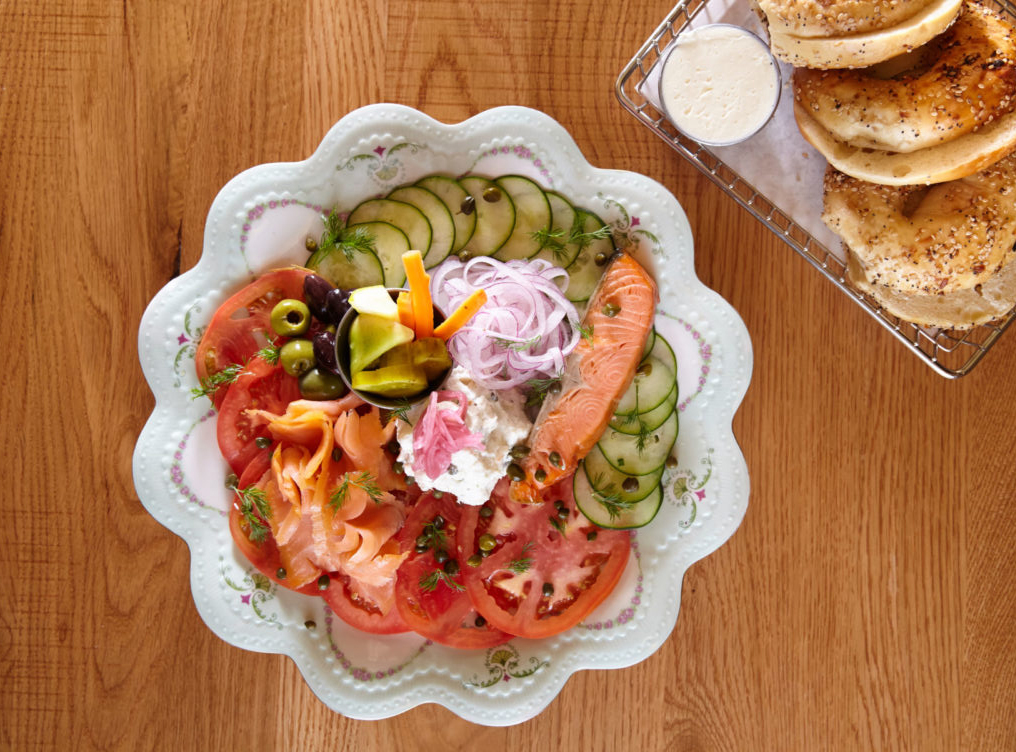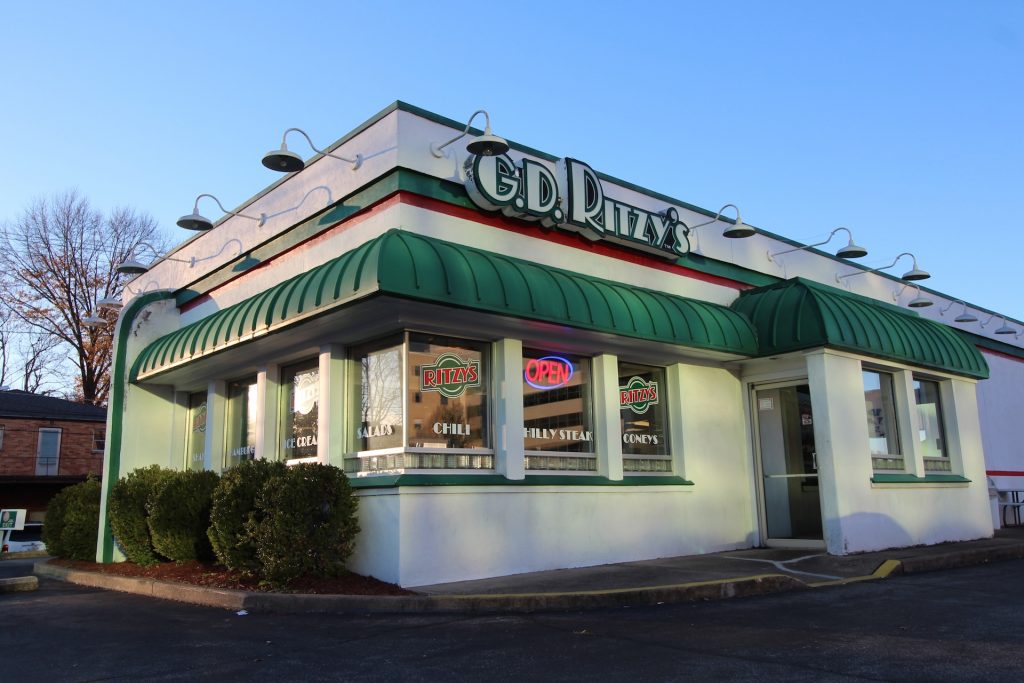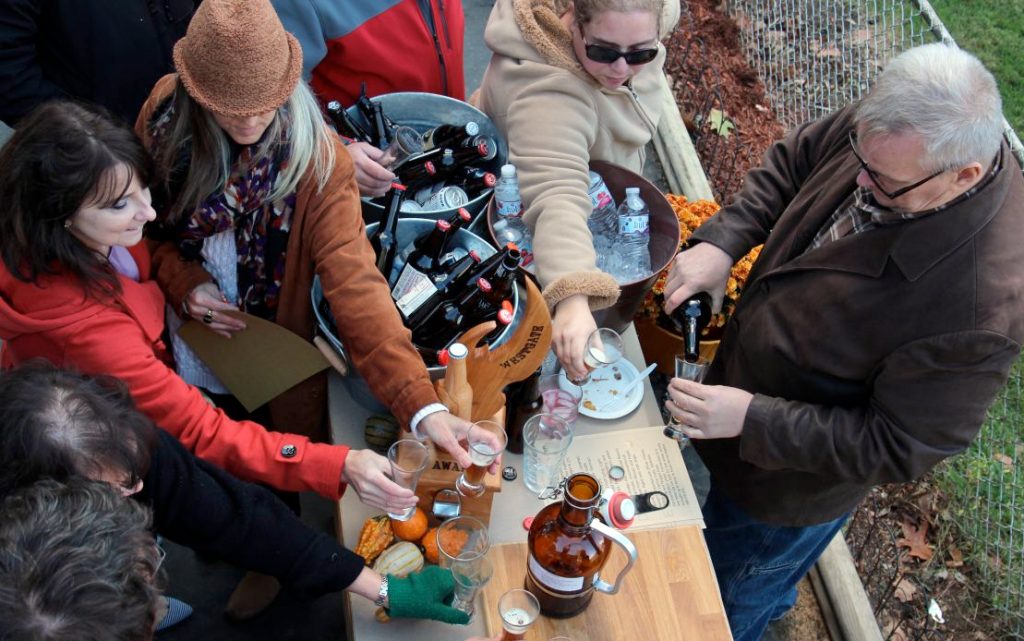Originally published in the July 2019 issue of (614) Magazine

For the uninitiated omnivore, vegan and vegetarian options may seem scarce, even in a city as innovative and inviting as Columbus when it comes to inclusive cuisine. Long gone are the heyday of hippie joints with lean offerings long on salads, yet still short on something you could sink your teeth into—not that the stereotype was ever entirely accurate.
Though there is certainly far more fare from which to choose than there was a generation ago, veteran vegans and vegetarians may reluctantly admit midday meals and evening eats have always been easier to accommodate than traditional morning menus. And anything a little later, maybe with a little liquor, is almost impossible to find. Even Oddfellows’ unambiguous “Classy as F*ck Brunch Buffet” couldn’t last forever. Woodhouse Vegan’s Monday/Tuesday pop-up persists, though with any luck their new digs in Italian Village will revive the tradition.
Brunch is more than breakfast’s big brother. It’s at least as much a social imperative as a search for sustenance. Be it boozy or just bougie, the leisure class case for more conscientious consumption still remains somewhat shaky. Brunch is about familiar comfort foods, and requires rousing a gaggle of friends whose idea of weekend decadence may not be implicitly plant forward.
But this is when sneaky vegans and vegetarians can show the skeptics exactly where Columbus secretly shines, with approachable spots and unassuming options that might just change the minds of many who can’t imagine brunch beyond bacon.
Alchemy Kitchen | 1439 Grandview Avenue | alchemyjuicecafe.com
The more robust sibling of the Parsons Avenue café, the Grandview location offers an expanded menu with holistic nutrition that makes it far more than just another juice bar. (But seriously, if you don’t order a smoothie, you’re missing out.)
Toasts are tempting, especially the Baconana, topped with almond butter, banana, coconut bacon, smoked sea salt, and maple on whole wheat. But the standout here is still the Mexican Shakshuka, a twist on the Mediterranean staple with sunny-side eggs in a spiced pepper and tomato sauce, black beans, avocado, Bulgarian feta, pickled chilies and red onions, cilantro, and a slab of farm toast.
The Angry Baker | 891 Oak Street | theangrybaker.com
This Olde Towne East eatery has inspired two offshoots in the Short North and Upper Arlington. But the atmosphere of the original is still a strong draw with scratch-made breads and pastries that are all vegan by design.
Go for the Brioche French Toast Sandwich stuffed with eggs and swiss with a side of maple syrup for dipping—or the Fork & Knife Burrito, filled with potatoes, avocado, black beans, and mozzarella then baked and topped with two eggs, salsa verde, sriracha, and green onions. Make either vegetarian choice vegan with seitan and cashew mozz instead. Be sure to grab something sweet to go.
Blunch | 2973 N High Street | blunchcolumbus.com
Perfectly blurring the line between breakfast and lunch was always the point at this High Street haunt just south of Weber. With a generous mix of vegetarian selections, there’s plenty here to keep everyone happy—including a drink menu from bloody to bubbly with a solid slate of local craft brews.
The Veggie Benedict with sautéed vegetables on a panko-crusted portabella with poached eggs and roasted red pepper-cashew sauce is the vegetarian spin on a morning mainstay. For something less savory, you can’t go wrong with a Pancake Flight of sautéed bananas foster, blueberry lemon ricotta, and sweet potato with toasted marshmallows.
Little Eater | 4215 N. High Street | littleeater.com
“Produce inspired” is more than just a mantra for this quaint Clintonville location now with a sister shop in the North Market. Bright, white, subway tiles are as synonymous with the brand as the seasonal selection of locally sourced ingredients.
Start with the Spinach & Leek Frittata, with an unexpected balance of dill, turmeric, and feta—or the Mushroom Quiche with shallots and Gruyère. For something with some crunch, try any of their toasts, from Avocado Toasted Seed Mix with olive oil and sea salt on a slice of Lucky Cat bread to Pistachio Nut Butter with strawberry-citrus jam on a Matija Breads ciabatta.
Portia’s Café | 4428 Indianola Avenue | portiascafe.com
Once coupled with the beloved Clintonville Community Market, this Indianola outpost is adding a second location later this year in a familiar space, the same spot as the old Whole World Natural Restaurant and Bakery off High Street, a neighborhood standard for nearly four decades.
The Garden Breakfast Wrap with tofu eggs, “cheeze,” “sawsage,” tomato, lettuce, and mayo on a gluten-free tortilla is a meal you can hold in one hand. But don’t skip a side of their Rosemary Herbed Home Fries. If sweet is more your speed, their waffles are unmatched with toppings ranging from banana and blueberry to chocolate chip and coconut, as well as seasonal surprises. ▩







